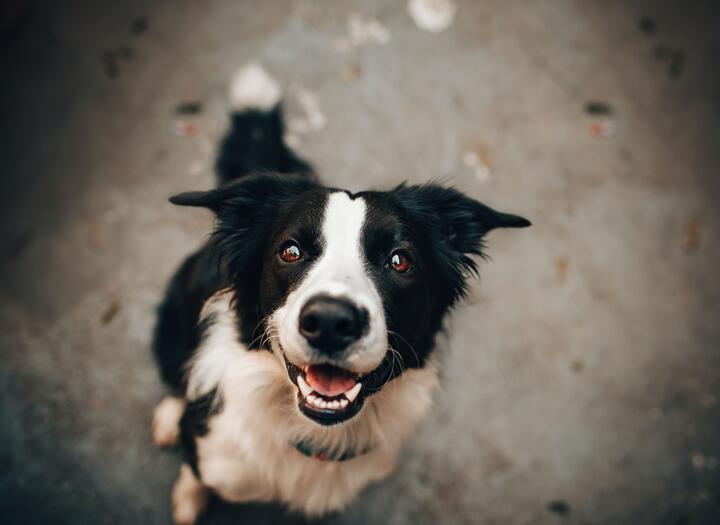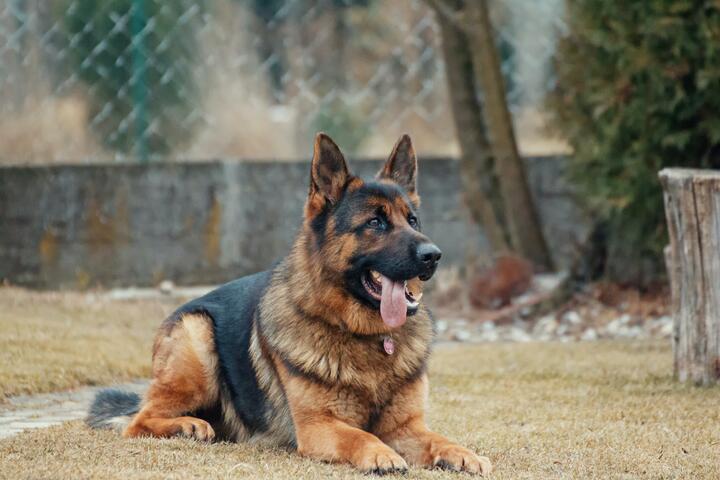Do Dogs Have Blood Types?
Nolan FosterDogs do have different blood types, 13 different blood types.
 Photo by Helena Lopes on pexels
Photo by Helena Lopes on pexelsDogs do have different blood types, 13 different blood types.
But don’t think you have to run out and get a medic alert bracelet so you’ll be prepared in case of an accident. Dog blood types are designated by the acronym DEA (dog erythrocyte antigen) and a number (DEA 1, DEA 2, DEA 3, and so on).
DEA 1 has two subtypes: 1.1 and 1.2. DEA 1.1 positive is the most common dog blood type, and dogs with this type are considered universal recipients. Dogs with blood that is negative for both 1.1 and 1.2, and dogs with DEA 4, are considered universal donors.
DEA 1.1 positive is the most antigenic blood in dogs and the most likely to cause serious problems if it’s transfused into a non-compatible recipient. Fortunately, unlike people, dogs rarely have antibodies against other blood types, so it’s usually safe to give a dog a blood transfusion without knowing its blood type first. One time. That’s why he doesn’t need a medic alert bracelet—unless he’s already had a transfusion.
Dogs that have received a previous transfusion have used up their “one free transfusion” card, because that transfusion may have activated antibodies that can now react fatally with a subsequent transfusion. If a dog has received a previous transfusion, unless it was less than three days ago, its blood must be cross-matched with a donor. In fact, females that have previously whelped a litter are also at higher risk and should always be cross-matched before receiving blood.
As with people, dogs may need a transfusion following blood loss from trauma or during surgery. They may also need it in cases of immune-mediated hemolytic anemia. Where does the blood come from? You may not have seen the doggy bloodmobile parked outside the veterinary hospital, but that’s not because doggy blood donors aren’t needed. Most veterinary clinics keep their own blood donors in-house, either a clinic dog that lives there, the veterinarian’s dog that comes to work every day, or a network of client dogs that have been volunteered to be “on call.”
Blood donors have to be fairly large (no sense in sucking a Chihuahua dry to try to save a Saint Bernard!), calm enough to take blood from (it takes about fifteen to twenty-five minutes, using the jugular vein), free of blood parasites (they are routinely checked), and have red-cell–rich blood. The breed of choice is the Greyhound, because they meet all these criteria, and because there are usually Greyhounds in need of adoption from race tracks. Greyhounds can be universal donors, meaning their blood can be used for any dog, no matter its blood type. In addition, Greyhounds have blood that is densely packed with red blood cells in comparison with other dogs. For example, a common measure of red blood cells, the hematocrit, averages around 35% in most dogs but runs around 45 to 60%. That’s more bang for the buck and helps anemic dogs get well faster. On the other hand, they tend to have fewer platelets than other breeds, so may not be the choice for a platelet deficient dog. Many vets will keep an adopted Greyhound as a donor for several months, then find it a home, replacing it with another dog from the track, so each dog eventually gets his chance at home life.
Compatible blood can last three to four weeks in the recipient’s body. Artificial blood, made from cow hemoglobin, is also available and has the advantage of being easily stored and readily available. However, it doesn’t last in the recipient’s body only as long.
Can your dog be a donor? Many veterinarians offer free bloodwork and parasite testing to clients who offer their dogs as on-call donors. It’s a good deal—and your dog could be a lifesaver!
Do Dogs Have Blood Types?
 Photo by Adam Kontor on pexels
Photo by Adam Kontor on pexelsIn dogs, there are more than 12 different blood types, with new ones being discovered every year. The most common type is DEA 1.1, found in 40% to 60% of all dogs. A chart displaying the blood types of dogs can be helpful in determining if your dog is compatible with a particular transfusion. There are several important factors to consider when giving a transfusion to your dog. The most important factor is the type of blood your dog will react to.
Dog blood types are classified into eight major groups. In humans, there are four major blood group systems, which are referred to as ABO, B, and O. In dogs, erythrocyte antigens (ABO) are the most prevalent. Because blood cells in dogs carry oxygen molecules, having the right type of erythrocytes can improve the chances of your dog recovering faster. However, the dog blood types are different from human blood groups and are only useful when they are given to an individual dog.
While DEA 1.1 is the least common blood type, the other types include DEA 1.2, 3, 4, 5, 6, and 7. DEA 1 is not found in dogs. The DEA 1 system is complicated because there are more than one blood type. While the DEA 1.1 blood type is responsible for most serious reactions from transfusions, it’s still important to recognize your dog’s specific blood group to ensure that it’s safe and appropriate.
There are several blood groups in dogs. The most common ones are DEA 1.0, B, and O. DEA 1.1 is the most significant. A positive diagnosis for your dog’s DEA 1.1 means that your dog is healthy and free of infectious diseases and parasites. Having this blood type is important for your pet’s health. Although blood donation is not recommended for all dogs, it may help to save a life in an emergency situation.
While dog blood types are universal for humans, dogs do have specific blood types. These blood groups are known as DEAs. They include DEA 1.2, DEA 1.3, DEA 1.4, and DEA 7. Among canines, DEA 2 is the most common. It is also the most common universal blood type for dogs. Despite this information, there are many dog breeds with these blood types.
Since canine blood is completely compatible with human blood, it is important to know the blood type of your dog. For example, if you are a blood donor, your dog must have DEA 1.1 in order to give blood. The DEA 1.1 is the most common dog blood type, but there are other types. The most common canine DEA 1.1 is the most dangerous. The DEA 1.2 is the least compatible with humans.
Dog blood type 1.1 is the most common. DEA 1.2 is the most common canine blood type. DEA 1.2 is the most common and is the most commonly recognized blood type among dogs. The DEA 1.1 is the most important blood group for dogs, as it is the most common dog blood type. Interestingly, a dog with DEA 1.1 can safely donate to any dog in the DEA 1.1 blood group.
Dogs have DEA 1.1 and DEA 1.2 blood types. A dog with a DEA 1.1 can safely donate blood to another dog with a DEA 1.1. A dog that has a positive DEA 1.1 can be a safe donor for a blood donor. If your dog has negative a paw print on their paws, you can donate blood to them. It will be the best way to help a dog in need.
DEA 1.1 is the most common canine blood type and is the most common blood group. It is usually the least dangerous, but it is important to know the DEA 1.2 blood type. A dog with a DEA 1.2 blood type will develop antibodies that can harm the recipient’s body. A positive paw print is the best way to tell if your dog has a DEA 1.1.
- WildlifeInteresting Facts About White Tigers

- InsectsWhat Do Dragonflies Eat?By Charlotte Green

- LivestockWhat Do Ducks Eat In A Pond?By Camilo Walker

- RodentsHamster Illnesses – Symptoms And TreatmentBy Nolan Foster

- WildlifeWhat Is The Lifespan Of Hippo?By Amelia B

- Dogs10 Interesting Facts About PoodlesBy Khai Dove

- BirdsFun Facts About RheaBy Charlotte Green

- Birds22 Interesting Facts About EaglesBy Lucas Torres

- RodentsWhat Food Is Best For Guinea Pigs?By Camilo Walker

- WildlifeAntelopes Gnu’S WeightBy Murphy Scott
